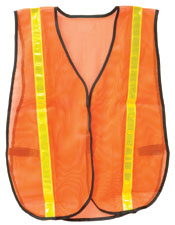The Good, the Bad and OSHA.
Central Valley, Hancock, and Tindell’s have invited OSHA for full inspections of their yards and production facilities while adding prominence to clean track records.
“If we discover something, they don’t fine us. Rather, they have told us how to correct it,” Patterson says. “And we’ve gone back and corrected it.”
The other side of the equation can be expensive. Last year, OSHA levied penalties totaling $44,250 against the Florida Lumber Co. of Miami for numerous safety hazards, including operating equipment without safety guards, operating overhead cranes with hooks lacking latches, using defective forklift trucks, obstructing emergency exit routes and fire extinguishers, having unsecured compressed gas cylinders, and not marking electrical panels.
Florida Lumber Co. would not speak to ProSales when reached for comment. The company been cited previously for a serious safety violation in 1988 after an employee was fatally injured at the site, according to OSHA.
Marler of the Construction Suppliers Association says he is always open to visiting yards and pointing out their faults before they face OSHA. “We offer a free service to do OSHA and [federal Transportation Department] inspections for our members, but hardly any of them ask for it,” says Marler, who has more than 20 years of experience and served as safety director of several trucking companies before joining the association. He typically gets a call to inspect a company at the 11th hour or beyond.
“Either they are fixing to get an audit, or they just had one and they want me to play doctor in there because they received a big fine,” Marler says. “But sometimes, it’s too late.”
Quite often, the scenario involves a disgruntled employee who was fired, calls OSHA, and cites safety issues at a yard–true or not–like an improperly placed fire extinguisher, sawdust-clogged electrical outlets, or a blocked guard on a saw.
OSHA gauges fines by a company’s size. The fines are not meant to shut down a company but mainly to get it to act. Still, Marler has inspected companies, pointed out their faults, then come back a week later to find everything returned to a state of disarray.
“Most companies don’t want to call OSHA because once they see something, you have to fix it,” says Lori Ridings, vice president of human resources at Tindell’s. The Knoxville, Tenn.-based dealer works with TOSHA, the Tennessee Occupational Safety and Health Administration, inviting the agency to inspect Tindell’s facilities about every two years.
The move has paid off safetywise for Tindell’s; its truss facility has been incident-free for a number of years. “Different inspectors see different things,” Ridings says of the benefits of an inspection.
Deborah Hayden, who ran the company’s human resources department for seven years, set up much of Tindell’s safety program in the mid-1990s. At the time, a safety program wasn’t on the books. Today, Hayden is a consultant who has helped dozens of dealers and companies establish a safety program.
When Hayden first dealt with Tindell’s, she realized that the dealer was measuring just about everything–sales, turnover, inventory, costs–but not safety.
“Most building material dealers don’t realize what the cost of an accident is. They start to realize it once one has occurred,” Hayden says. “Safety interfaces with everything in the company, and it begins when you hire the employee.”
In some cases, the dealer is hiring a warm body without ever doing the proper recruiting upfront or making sure the employee is working safely. “Sometimes the employee knows the system and is there just to work a couple of days and file a claim,” says Hayden.



